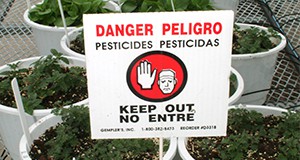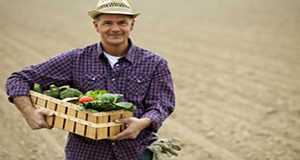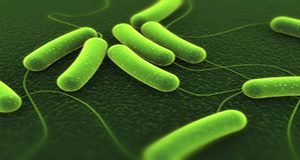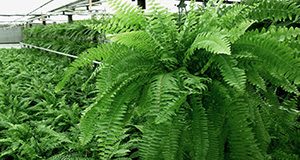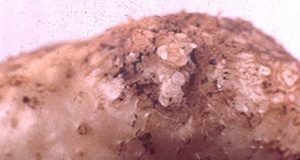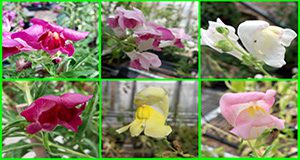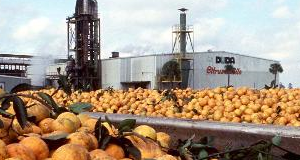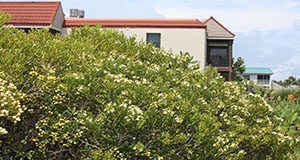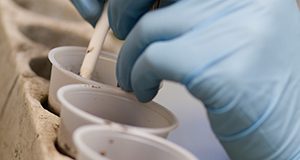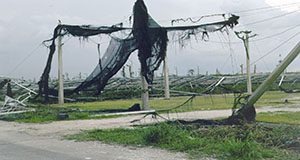Safety is a high concern for agricultural employers whose workers deal with hazardous materials, such as pesticides. In 1992, the US Environmental Protection Agency (EPA) issued the Worker Protection Standard for Agricultural Pesticides (WPS), a regulation that requires agricultural employers to take steps to reduce pesticide-related risks for their workers and handlers. This five-page document describes the responsibilities of employers who must adhere to the WPS. Written by Frederick M. Fishel and published by the UF/IFAS Agronomy Department, January 2018.
http://edis.ifas.ufl.edu/ag417
Author: Sarah Chrisien
The Food Safety Modernization Act of 2011-Final Rule for Preventive Controls for Human Food

This 7-page fact sheet is one in a series covering the different rules promulgated under the new Food Safety Modernization Act (FSMA), which was signed into law on January 4, 2011. It is intended to provide an overview of the final Preventive Controls for Human Food (PCHF) rule. Written by Jessica A. Lepper, Soohyoun Ahn, Keith R. Schneider, Michelle D. Danyluk, and Renee Goodrich-Schneider and published by the UF/IFAS Department of Food Science and Human Nutrition, January 2018.
http://edis.ifas.ufl.edu/fs301
Food Safety on the Farm: Good Agricultural Practices and Good Handling Practices-Sanitary Facilities
The Food Safety on the Farm series is a collection that reviews the generally recognized principles of GAPs (good agricultural practices) as they relate to produce, primarily at the farm level and with a particular focus on fresh Florida crops and practices. This publication focuses on GAPs and GHPs (good handling practices) relating specifically to sanitary facilities. Written by Jessica A. Lepper, Aswathy Sreedharan, Renee M. Goodrich-Schneider, and Keith R. Schneider and published by the UF/IFAS Food Science and Human Nutrition Department, January 2018.
http://edis.ifas.ufl.edu/fs159
Preventing Foodborne Illness: E coli "The Big Six"
This 7-page fact sheet is one in a series of fact sheets discussing common foodborne pathogens of interest to food handlers, processors, and retailers. It covers the characteristics of, and symptoms caused by, the bacterium E. coli (particularly the “big six” strains), and also details how to minimize the risk of spreading or contracting an E. coli infection. Written by Bruna Bertoldi, Susanna Richardson, Renee Goodrich-Schneider, Ploy Kurdmongkoltham, and Keith R. Schneider and published by the UF/IFAS Department of Food Science and Human Nutrition, January 2018.
http://edis.ifas.ufl.edu/fs233
Cultural Guidelines for Commercial Production of Boston Fern (Nephrolepsis exaltata ‘Bostoniensis’)
‘Bostoniensis’, or Boston fern, is a popular sword fern variety that is one of the most important foliage crops in the ornamental plant industry. This 5-page article describes common Boston fern cultivars, provides guidelines for their culture and interior use, and lists physiological problems that may be encountered during production and interiorscape use. Written by Bill Schall, Heqiang Huo, and Jianjun Chen and published by the UF/IFAS Department of Environmental Horticulture, January 2018.
http://edis.ifas.ufl.edu/ep550
The Fate of Nitrogen Applied to Florida Turfgrass
The quality of Florida’s surface and ground waters is of utmost importance to the flora and fauna living in them, as their growth is directly related to the amount of nutrients in these waters. In order to make informed decisions regarding nitrogen (N) applications to turfgrass, it is important to understand the N cycle in the soil/turfgrass system. The objective of this 8-page publication is to identify and describe the sources and potential fates of N applied to Florida turfgrass. Written by T.W. Shaddox and J.B. Unruh and published by the UF/IFAS Department of Environmental Horticulture, January 2018.
http://edis.ifas.ufl.edu/ep546
Fluensulfone: A New "Tool in the Tool Box" to Manage Plant-parasitic Nematodes in Vegetable Production
Plant-parasitic nematodes pose a problem in agricultural systems by feeding on crops, therefore affecting their yield. Fluensulfone is a chemical that can be applied using various methods to manage the impact of plant-parasitic nematodes on crop production. This 6-page document discusses the characteristics and use of fluensulfone as a tool for nematode management practices. Written by Gilma X. Castillo, Monica Ozores-Hampton, and Pablo A. Navia Gine and published by the UF/IFAS Department of Horticultural Sciences, January 2018.
http://edis.ifas.ufl.edu/hs1313
Planting and Propagation of Snapdragons in Florida
Snapdragons are a common plant in Florida landscapes and are one of the top ten fresh-cut flowers in the nation. This 5-page publication, written by Heqiang Huo and Jianjun Chen, explores the planting and propagation of snapdragons in Florida landscapes. Published by the UF/IFAS Department of Environmental Horticulture, January 2018.
http://edis.ifas.ufl.edu/ep549
Iron for Florida Turfgrasses
Iron (Fe) is commonly applied to enhance turfgrass color. Understanding the dynamics of Fe both in the plant and in the soil could greatly enhance your nutrient management programs. The objective of this 4-page publication is to explain the function of Fe within the plant, describe the Fe sources available for turfgrasses, and identify which forms of Fe are most effective in improving turfgrass quality. Written by Travis Shaddox and J.B. Unruh and published by the UF/IFAS Department of Environmental Horticulture, January 2018.
http://edis.ifas.ufl.edu/ep551
Diet and Brain Health
Following a healthful diet provides many benefits throughout the life cycle. Maintaining good eating habits as we age can be especially helpful to preserve cognitive health (the ability to remember, learn, and make decisions). This 3-page publication provides tips for healthful eating that may help to maximize brain health in older adults. Written by Pooja Tolani and Wendy J. Dahl and published by the UF/IFAS Department of Food Science and Human Nutrition, January 2018.
http://edis.ifas.ufl.edu/fs304
Food Safety on the Farm: Good Agricultural Practices and Good Handling Practices-Packing Operation Sanitation
The ‘Food Safety on the Farm’ series is a collection that reviews the generally recognized principles of GAPs (good agricultural practices) as they relate to produce, primarily at the farm level and with a particular focus on fresh Florida crops and practices. This publication focuses on GAPs and GHPs (good handling practices) relating specifically to packing operation sanitation. Written by Jessica A. Lepper, Aswathy Sreedharan, Renee M. Goodrich-Schneider, and Keith R. Schneider and published by the UF/IFAS Food Science and Human Nutrition Department, December 2017.
http://edis.ifas.ufl.edu/fs189
Joewood (Jacquinia keyensis): Identification and Uses
Jacquinia keyensis, known commonly as joewood, is listed as a threatened species by the state of Florida, and is most commonly found in the Florida Keys. This 8-page document discusses the identification and uses of joewood. Written by Stephen H. Brown, Marc S. Frank, and Andrew K. Koeser and published by the UF/IFAS Department of Environmental Horticulture, January 2018.
http://edis.ifas.ufl.edu/ep548
The New Nutrition Facts Label
The Nutrition Facts label is a great tool for consumers who are trying to make better food choices; it was created in 1993 to help members of the public learn more about the nutritional value of their food. Revisions to the label’s design were released in 2016, marking the first major change to the label in over 20 years. This 3-page document, written by Samantha Buddemeyer and Gail P. A. Kauwell, discusses the new features of the Nutrition Facts label. Published by the UF/IFAS Department of Food Science and Human Nutrition, January 2018.
http://edis.ifas.ufl.edu/fs300
Overview of Extension Program Planning Models

The use of program plan development models within Extension has a long history of application based on environmental context, interest, and perceived value. The purpose of this 6-page article is to articulate a comparative overview of the various program planning models designed and employed by Extension professionals in education contexts. Written by John Diaz, Cody Gusto, and David Diehl and published by the UF/IFAS Department of Agricultural Education and Communication, January 2018.
http://edis.ifas.ufl.edu/wc289
Understanding Good Irrigation and Fertilization Behaviors Among Households Using Landscape Design Features
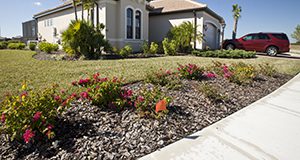
With increasing concerns over water resources in Florida, Extension can target households with irrigated landscapes to encourage practices that protect water quality and quantity. This document compares the water conservation education needs of different Florida household subgroups. Written by Anil Kumar Chaudhary and Laura A. Warner and published by the UF/IFAS Department of Agricultural Education and Communication, January 2018.
http://edis.ifas.ufl.edu/wc292
Developing a Program Plan Based on the Program Planning Cycle
For over a century, Extension programs have used specific program development plans to create or refine services for clientele. This 6-page article seeks to provide an overview of fundamental tenets within program planning, how a planning process informs a development plan, and why these components are integral to Extension services. Written by John Diaz, Cody Gusto, and David Diehl and published by the UF/IFAS Department of Agricultural Education and Communication, December 2017.
http://edis.ifas.ufl.edu/wc290
UF/IFAS Standardized Nutrient Recommendations for Vegetable Crop Production in Florida
Soil testing is a scientific tool for effective nutrient management that provides an estimate or an index of the available nutrient-supplying capacity of the soil. This 9-page publication presents the fertilization recommendations for vegetable crops based on soil tests performed by the IFAS Extension Soil Testing Laboratory (ESTL). Written by Rao Mylavarapu, George Hochmuth, and Guodong Liu and published by the UF/IFAS Department of Soil and Water Sciences, December 2017.
http://edis.ifas.ufl.edu/cv002
Food Safety on the Farm: Good Agricultural Practices and Good Handling Practices-Worker Health and Hygiene
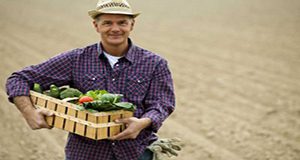
The ‘Food Safety on the Farm’ series is a collection that reviews the generally recognized principles of GAPs (good agricultural practices) as they relate to produce, primarily at the farm level and with particular focus on fresh Florida crops and practices. This 4-page publication focuses on GAPs and GHPs (good handling practices) relating specifically to worker health and hygiene. Written by Jessica A. Lepper, Keith R. Schneider, Renee M. Goodrich-Schneider, and Aswathy Sreedharan and published by the UF/IFAS Food Science and Human Nutrition Department, December 2017.
http://edis.ifas.ufl.edu/fs158
Hurricane Preparation List for the Container Nursery
Busy professionals don’t often have time to consider the impact a hurricane can have on their nursery until one is on the way. This 2-page fact sheet provides a list of items and tasks to complete prior to a hurricane’s arrival to minimize damage to the nursery. Written by Tom Yeager and published by the UF/IFAS Environmental Horticulture Department, December 2017.
http://edis.ifas.ufl.edu/ep547
Food Safety on the Farm: Good Agricultural Practices and Good Handling Practices-Field Sanitation
The ‘Food Safety on the Farm’ series is a collection that reviews the generally recognized principles of GAPs (good agricultural practices) as they relate to produce, primarily at the farm level and with particular focus on fresh Florida crops and practices. This 4-page publication focuses on GAPs and GHPs (good handling practices) relating specifically to field sanitation. Written by Jessica A. Lepper, Aswathy Sreedharan, Renee M. Goodrich-Schneider, and Keith R. Schneider and published by the UF/IFAS Department of Food Science and Human Nutrition, December 2017.
http://edis.ifas.ufl.edu/fs160
